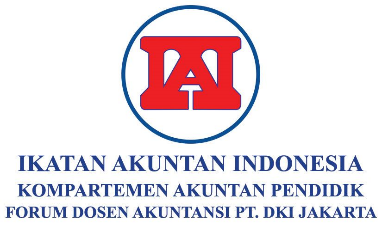Are Banking Financial Performances and Green Banking Disclosure Associated with Bank Profitability?
DOI:
https://doi.org/10.62108/asrj.v3i1.7645Keywords:
Green Banking, Capital Adequacy, Non-Performing Loan, Bank Efficiency, Bank Liquidity Level, Bank ProfitabilityAbstract
This study examines how banking financial performance and green banking disclosure influence profitability. Financial performance in this research consists of capital adequacy ratio, non-performing loans, efficiency ratio, and loan-to-savings ratio. The research sample consisted of 30 samples selected using a purposive sampling method from 6 banking sector companies listed on the Indonesia Stock Exchange in 2018-2022, which consistently reported their green banking practices and did not experience losses during the research period. The analytical method in this research is panel data regression analysis. The research results show that the capital adequacy ratio and efficiency ratio have a negative effect on profitability. On the other hand, non-performing loans and the loan-to-deposit ratio positively affect company profits. Furthermore, green banking disclosure has a negative and significant effect on profitability. Implementing Green Banking can cause a decrease in profitability due to additional costs associated with its implementation. This research provides additional literature related to the implementation of green banking in Indonesia.
References
Amzy, A., Febriansyah, I., & Munir, A. (2019). The effect of financial performance ratios on conventional bank profitability in Indonesia stock exchange. Ekuilibrium: Jurnal Ilmiah Bidang Ilmu Ekonomi, 14(2), 84–103. https://doi.org/10.24269/ekuilibrium.v14i2.2019.pp84-103
Avrita, R. D., & Pangestuti, I. R. D. (2016). Analisis pengaruh car, npl, ldr, nim, dan bopo terhadap profitabilitas bank (perbandingan bank umum go public dan bank umum non go public di Indonesia periode tahun 2011-2014). Diponegoro Journal of Management, 5(2), 1–13. http://eprints.undip.ac.id/49210/
Berger, A. N., & Humphrey, D. B. (1997). Efficiency of financial institutions: international survey and directions for future research. European Journal of Operational Research, 98(2), 175–212. https://doi.org/10.1016/S0377-2217(96)00342-6
Bessong, P. K., & Tapang, A. T. (2012). Social responsibility cost and its influence on the profitability of Nigerian banks. International Journal of Financial Research, 3(4). https://doi.org/10.5430/ijfr.v3n4p33
Buallay, A. M., Al Marri, M., Nasrallah, N., Hamdan, A., Barone, E., & Zureigat, Q. (2021). Sustainability reporting in banking and financial services sector: a regional analysis. Journal of Sustainable Finance & Investment, 1–26. https://doi.org/10.1080/20430795.2021.1978919
Buchory, H. A. (2015). Capital, operational efficiency and credit risk in the banking intermediation (study on regional development bank all over Indonesia in 2014). Atlantis Press, 180–188. https://doi.org/10.2991/iceb-15.2015.27
Budiantoro, S. (2014). Mengawal green banking di Indonesia dalam rangka pembangunan berkelanjutan.
Cahyadi, F. (2021, December 1). Literasi keuangan: green banking atau greenwashing? Madaniberkelanjutan.Id. https://madaniberkelanjutan.id/literasi-keuangan-green-banking-atau-greenwashing/
Chowdhury, M. M. H., & Hossain, M. (2017). Determinants of capital adequacy ratio (car) of conventional banks in Bangladesh. Asian Business Review, 7(1), 29–36. https://doi.org/10.24018/ejbmr.2023.8.2.1887
Dendawijaya, L. (2015). Manajemen perbankan. Jakarta: Ghalia Indonesia.
Dewi, A. S. (2018). Pengaruh car, bopo, npl, nim, dan ldr terhadap roa pada perusahaan di sektor perbankan yang terdaftar di bei periode 2012-2016. Jurnal Pundi, 1(3). https://doi.org/10.31575/jp.v1i3.55
Dewi, N. K. V. C., Cipta, W., & Kirya, I. K. (2015). Pengaruh ldr, lar, der dan cr terhadap roa. Journal Bisma Universitas Pendidikan Ganesha, 3(1), 1–10. https://ejournal.undiksha.ac.id/index.php/JMI/article/view/4655
Dwi Indah Putrianingsih, & Arief Yulianto. (2016). Pengaruh non performing loan (npl) dan capital adequacy ratio (car) terhadap profitabilitas. Management Analysis Journal, 5(2), 110–115. https://doi.org/10.15294/maj.v5i2.7622
Edi, E. (2022). The role of managerial ability on operational performance and stock return moderated by ceo overconfidence. Journal of Accounting, Finance and Auditing Studies, 8(4), 258–277. https://doi.org/10.32602/jafas.2022.036
Gupta, J. (2015). Role of green banking in environment sustainability: a study of selected commercial banks in Himachal Pradesh. International Journal of Multidisciplinary Research and Development, 2(8), 349–353. https://doi.org/10.13140/RG.2.2.33734.78407
Hanafia, F., & Karim, A. (2020). Analisis car, bopo, npf, fdr, nom, dan dpk terhadap profitabilitas (roa) pada bank syari’ah di Indonesia. Target : Jurnal Manajemen Bisnis, 2(1), 36–46. https://doi.org/10.30812/target.v2i1.697
Hanif, Nur Wahyu Ningsih, & Fatullah Iqbal. (2020). Green banking terhadap profitabilitas bank umum syariah di Indonesia. Jurnal Fidusia, 3(2). https://fe.ummetro.ac.id/ejournal/index.php/jpk/article/view/532
Hutagalung, E. N., Djumhair, & Ratnawati, K. (2011). Analisa rasio keuangan terhadap kinerja bank umum di Indonesia. Jurnal Aplikasi Manajemen, 11 (1), 122–130. https://jurnaljam.ub.ac.id/index.php/jam/article/view/502
Inggawati, R., Lucy, & Hermanto, B. (2018). The influence of loan to deposit ratio, loan operational of income operational and non-performing loan toward profitability of bank perkreditan rakyat in sidoarjo regency. International Journal of Scientific and Research Publications, 8 (11), 510–519. https://doi.org/10.29322/IJSRP.8.11.2018.p8354
Irman, M., & Wulansari, V. (2018). Analisis pengaruh rasio camel terhadap kinerja keuangan perbankan pada bank yang terdaftar di bursa efek Indonesia tahun 2011-2016. Bilancia: Jurnal Ilmiah Akuntansi, 2 (2), 182–194. https://www.ejournal.pelitaindonesia.ac.id/ojs32/index.php/BILANCIA/article/view/62
Ismail, M. B. A. (2018). Manajeman perbankan: dari teori menuju aplikasi. Kencana.
Jordi Suwandi, & Hening Widi Oetomo. (2017). Pengaruh car, npl, bopo, dan ldr terhadap roa pada busn devisa. Jurnal Ilmu Dan Riset Manajemen, 6, 1–21. http://jurnalmahasiswa.stiesia.ac.id/index.php/jirm/article/view/1711
Karyani, E., & Obrien, V. V. (2020). Green banking and performance: the role of foreign and public ownership. Jurnal Dinamika Akuntansi Dan Bisnis, 7, 221–234. https://doi.org/10.24815/jdab.v7i2.17150
Kim, E. H., & Lyon, T. P. (2015). Greenwash vs. brownwash: exaggeration and undue modesty in corporate sustainability disclosure. Organization Science, 26, 705–723. http://www.jstor.org/stable/43661016
Kumar, K., & Prakash, A. (2019). Developing a framework for assessing sustainable banking performance of the Indian banking sector. Social Responsibility Journal, 15(5), 689–709. https://doi.org/10.1108/SRJ-07-2018-0162
Kumari, L., Sandhu, V., & Atwal, H. (2016). Green banking: an innovative initiative for sustainable development. https://www.academia.edu/75021428/Green_Banking_An_Innovative_Initiative_for_Sustainable_Development_Lalita_Kumari_Student_
Maria, A. (2015). Pengaruh car, bopo, nim, npl, dan ldr terhadap roa: studi kasus pada 10 bank terbaik di Indonesia periode 2007-2011. Calyptra: Jurnal Ilmiah Mahasiswa Universitas Surabaya, 4 (1), 1–19. https://journal.ubaya.ac.id/index.php/jimus/article/view/1242
Moh. Nadir. (2017, July 20). Ojk terbitkan aturan tentang program keuangan berkelanjutan. Money.Kompas.Com. https://money.kompas.com/read/2017/07/20/211427526/ojk-terbitkan-aturan-tentang-program-keuangan-berkelanjutan
Nanda, A. S., Hasan, A. F., & Aristyanto, E. (2019). Pengaruh car dan bopo terhadap roa pada bank syariah pada tahun 2011-2018. Islamic Banking and Finance Journal, 3 (1), 19–31. https://doi.org/10.21070/perisai.v3i1.2160
P. P. Rahmi, Herlina, L., & S Novitasary. (2022). The effect of capital adequacy ratio (car), net interest margin (nim), and loan to deposits ratio (ldr) on return on assets (roa) in pt bank negara Indonesia persero tbk period of 2011-2021. Journal of Business and Management INABA, 11(1), 1–17. https://doi.org/10.56956/jbmi.v1i1.36
Pramana, K. M., & Artini, L. G. S. (2016). Analisis tingkat kesehatan bank (pendekatan rgec) pada pt. bank danamon Indonesia tbk. E-Jurnal Manajemen Unud. https://www.neliti.com/id/publications/255238/analisis-tingkat-kesehatan-bank-pendekatan-rgec-pada-pt-bank-danamon-indonesia-t
Ragupathi, M., & Sujatha, S. (2015). Green banking initiatives of commercial banks in India. International Research Journal of Business and Management, 8(2), 74–81. https://www.semanticscholar.org/paper/Green-Banking-Initiatives-of-Commercial-Banks-in-Rangasamy/07cc66cfe6d3c2e2e42540b83acdb6938b744d59
Ratnasari, T., Surwanti, A., & Pribadi, F. (2021). Implementation of green banking and financial performance on commercial banks in Indonesia (pp. 323–336). https://doi.org/10.1108/S1571-038620210000028018
Setyowati, L., & Budiwinarto, K. (2017). Analisis pengaruh nim, bopo, ldr, npl, car terhadap roa pada bank umum nasional di bursa efek Indonesia periode 2012-2015. Ekonomi Bisnis Dan Kewirausahaan, VI(2), 140–158. https://jurnal.usahidsolo.ac.id/index.php/IAB/article/view/83
Shaumya, K., & Arulrajah, A. A. (2016). Measuring green banking practices: evidence from Sri Lanka. International Conference on Business Management , 999–1023. https://doi.org/10.2139/ssrn.2909735
Siahaan, C., Silalahi, A. S., Syahyunan, S., & Sianipar, A. S. (2021). Analysis of green banking sustainability and financial performance implementation towards profitability of banking listed on the Indonesia stock exchange in 2012-2018. Journal Of Management Analytical and Solution (JoMAS), 1(1), 1–12. https://doi.org/10.32734/jomas.v1i1.5240
Stevani, & Tony Sudirgo. (2019). Analisis car, bopo, npl, dan ldr terhadap roa perusahaan perbankan. Jurnal Paradigma Akuntansi, 1(3), 863–871. https://doi.org/10.24912/jpa.v1i3.5590
Sugiyono, S. (2019). Metodologi penelitian kualitatif kuantitatif dan r&d. Bandung: Cv. Alfabeta.
Syamsuddin, A. bin. (2013). Pengaruh car, npl, dan nim terhadap profitabilitas perbankan (studi pada bank umum go public yang listing di bursa efek Indonesia tahun 2008-2012). Business and Management Journal, 10(1), 1–14. https://repositori.uin-alauddin.ac.id/7192/
Tenriola, A. (2019). Anteseden return on asset (roa) pada bank bumn Indonesia. BJRM (Bongaya Journal of Research in Management), 2(1), 68–78. https://doi.org/10.37888/bjrm.v2i1.158
Tia, C., Hasnawati, S., & Faisol, A. (2023). The impact of green banking on profitability (study on banking sector listed on Indonesia stock exchange (idx) period 2016-2022). International Journal of Asian Business and Management, 2(6), 887–900. https://doi.org/10.55927/ijabm.v2i6.7075
Utari, D., Purwanti, A., & Prawironegoro, D. (2014). Manajemen keuangan. Jakarta: Mitra Wacana Media.
Van Horne, J. C., & Wachowicz, J. M. (2021). Prinsip-prinsip manajemen keuangan.
Wibowo, M., & Aumeboonsuke, V. (2020). Bank financial capability on msme lending amid economic change and the growth of fin-tech companies in Indonesia. Thailand and The World Economy, 38(2), 63–87. https://doi.org/10.14457/NIDA.the.2019.138
Yogianta, C. W. (2013). Analisis pengaruh car, nim, ldr, npl dan bopo terhadap profitabilitas studi pada bank umum yang go publik di bursa efek Indonesia periode tahun 2002-2010. Jurnal Bisnis Strategi, 22(2), 94–111. https://repofeb.undip.ac.id/7833/
Yuhasril. (2019). The effect of capital adequacy ratio (car), non performing loan (npl), operational efficiency (bopo), net interest margin (nim), and loan to deposit ratio (ldr), on return on assets (roa). Reseach Journal of Finance and Accounting, 10(10), 166–176. https://doi.org/10.7176/RJFA/10-10-19
Zhelyazkova, V., & Kitanov, Y. (2015). Green banking–definition, scope and proposed business model. Journal of International Scientific Publications, 9(1), 309–315. https://www.scientific-publications.net/en/article/1000724/
Downloads
Published
Issue
Section
License
Copyright (c) 2024 Michael Walzer, Abdul Hakim At Tamimi, Amrie Firmansyah

This work is licensed under a Creative Commons Attribution 4.0 International License.
Authors who publish with this journal agree to the following terms:
- Authors retain copyright and grant the journal right of first publication with the work simultaneously licensed under a Creative Commons Attribution 4.0 International License that allows others to share the work with an acknowledgment of the work's authorship and initial publication in this journal.
- Authors can enter into separate, additional contractual arrangements for the non-exclusive distribution of the journal's published version of the work (e.g., post it to an institutional repository or publish it in a book), with an acknowledgment of its initial publication in this journal.
- Authors are permitted and encouraged to post their work online (e.g., in institutional repositories or on their website) before and during the submission process, as it can lead to productive exchanges, as well as earlier and greater citation of published work.

This work is licensed under a Creative Commons Attribution 4.0 International License.














